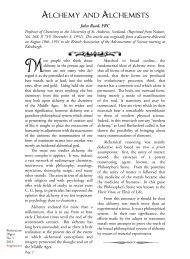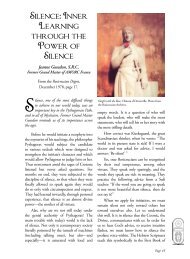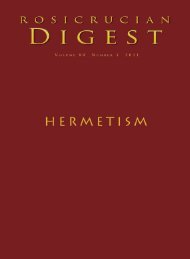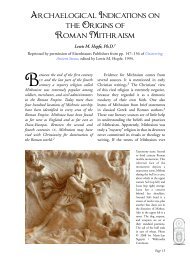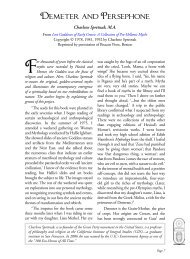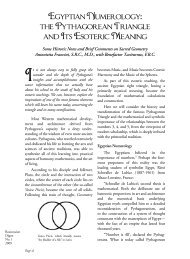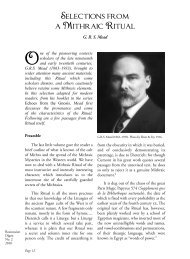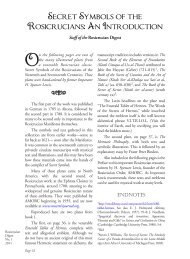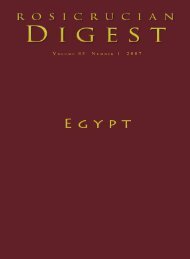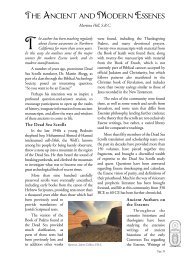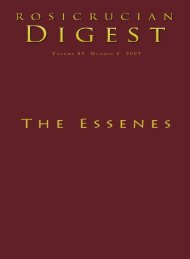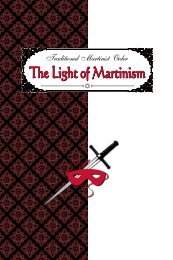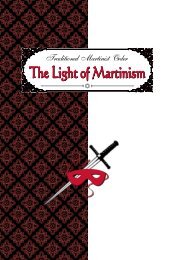The Grand Temple - Rosicrucian Order, AMORC
The Grand Temple - Rosicrucian Order, AMORC
The Grand Temple - Rosicrucian Order, AMORC
You also want an ePaper? Increase the reach of your titles
YUMPU automatically turns print PDFs into web optimized ePapers that Google loves.
Definitive knowledge of what happened in<br />
the ancient Mystery Schools therefore is limited<br />
by secrecy over the ages; a dearth of texts and<br />
artifacts available for research; and the limits of<br />
our understanding of the perspectives of the<br />
ancient peoples, especially their priests, priestesses,<br />
and shamans. However, we can piece<br />
together the general themes and purposes of the<br />
ancient Mystery Schools by studying their<br />
context, the available inscriptions, temples, texts,<br />
etc., and by attuning to the spirit of the ancient<br />
Egyptian, Greek, and Roman people, thereby<br />
opening ourselves up to other ways of perceiving<br />
beyond just intellectual understanding. We can<br />
reach beyond our own time and space to step<br />
into the shoes of the ancient mystics, students,<br />
and initiates, as they did in their time. Finally,<br />
we can study and experience the wisdom of these<br />
ancient traditions as they have been passed down<br />
through the Western esoteric tradition.<br />
Christopher McIntosh writes in his book,<br />
<strong>The</strong> <strong>Rosicrucian</strong>s, “<strong>The</strong> <strong>Rosicrucian</strong> movement is<br />
part of a way of thinking whose roots go far back<br />
into antiquity and which can be described as the<br />
Western esoteric tradition.” 4 In <strong>Rosicrucian</strong><br />
History and Mysteries Christian Rebisse states,<br />
“As the history of <strong>Rosicrucian</strong>ism fits into that<br />
of Western esotericism, it is important to<br />
emphasize what underlies this concept…<strong>The</strong><br />
word literally means ‘toward the interior’ and<br />
describes that which is not directly accessible…it<br />
involves a gnosis, a knowledge that leads to a<br />
transformation, a regeneration of the soul.<br />
“Furthermore, as shown by Antoine Faivre,<br />
esotericism constitutes more a way of<br />
approaching matters rather than a body of<br />
defined doctrines. Its fundamental<br />
elements, such as alchemy, magic,<br />
astrology, Kabbalah, magnetism, and<br />
various spiritual techniques with<br />
which it is associated, are not readily<br />
apparent. It has been pieced together<br />
slowly, has penetrated the West<br />
gradually, and has been subjected to<br />
various influences.” 5<br />
T h e Ro s i c r u c i a n Ord e r,<br />
<strong>AMORC</strong>, traces its roots back to<br />
Atlantis, source of the “Primordial<br />
Tradition.” “This concept first<br />
appeared in the Renaissance,<br />
especially after the rediscovery of the<br />
Corpus Hermeticum, a group of mysterious<br />
texts attributed to an Egyptian priest, Hermes<br />
Trismegistus.” 6<br />
Below is the <strong>Rosicrucian</strong> timeline, from its<br />
most ancient sources to today.<br />
Atlantis<br />
(Prehistory)<br />
Time Line<br />
Plato (c. 428 -<br />
348 BCE) described<br />
Atlantis in detail in<br />
his books, Critias and<br />
Timaeus. He stated<br />
that his knowledge<br />
on this subject was<br />
reported to him by<br />
Solon (c. 640 - 558<br />
BCE) who, according<br />
to his own words,<br />
obtained it from Kircher’s map of Atlantis<br />
Egyptian priests.<br />
Some people believe that Atlantis actually existed<br />
and is the cradle of the Primordial Tradition,<br />
which flows through the <strong>Rosicrucian</strong> tradition.<br />
This highly sophisticated and spiritual civilization<br />
flourished for millennia, until it declined into<br />
corruption, warmongering, and superstition,<br />
finally ending in a cataclysm in 9564 BCE.<br />
Others believe that Atlantis merely symbolizes<br />
the unknown source of the Primordial Tradition,<br />
representing a previous “Golden Age.”<br />
Predynastic Egypt<br />
(c. 10000 to c. 3000 BCE)<br />
Egyptian Mystery School<br />
by H. Spencer Lewis<br />
According to the Primordial<br />
Tradition, the Atlanteans chose<br />
Egypt as the place to lay the<br />
foundation for what was to<br />
become the cultural and spiritual<br />
home of newborn antiquity.<br />
Dynastic Egypt<br />
(c. 3000 to 30 BCE)<br />
Legend tells us that the<br />
first King of Egypt was chosen<br />
from among the Atlanteans.<br />
Later, Thutmose III (1473-<br />
1425 BCE), in addition to<br />
serving as Pharaoh, directed<br />
Page 3




